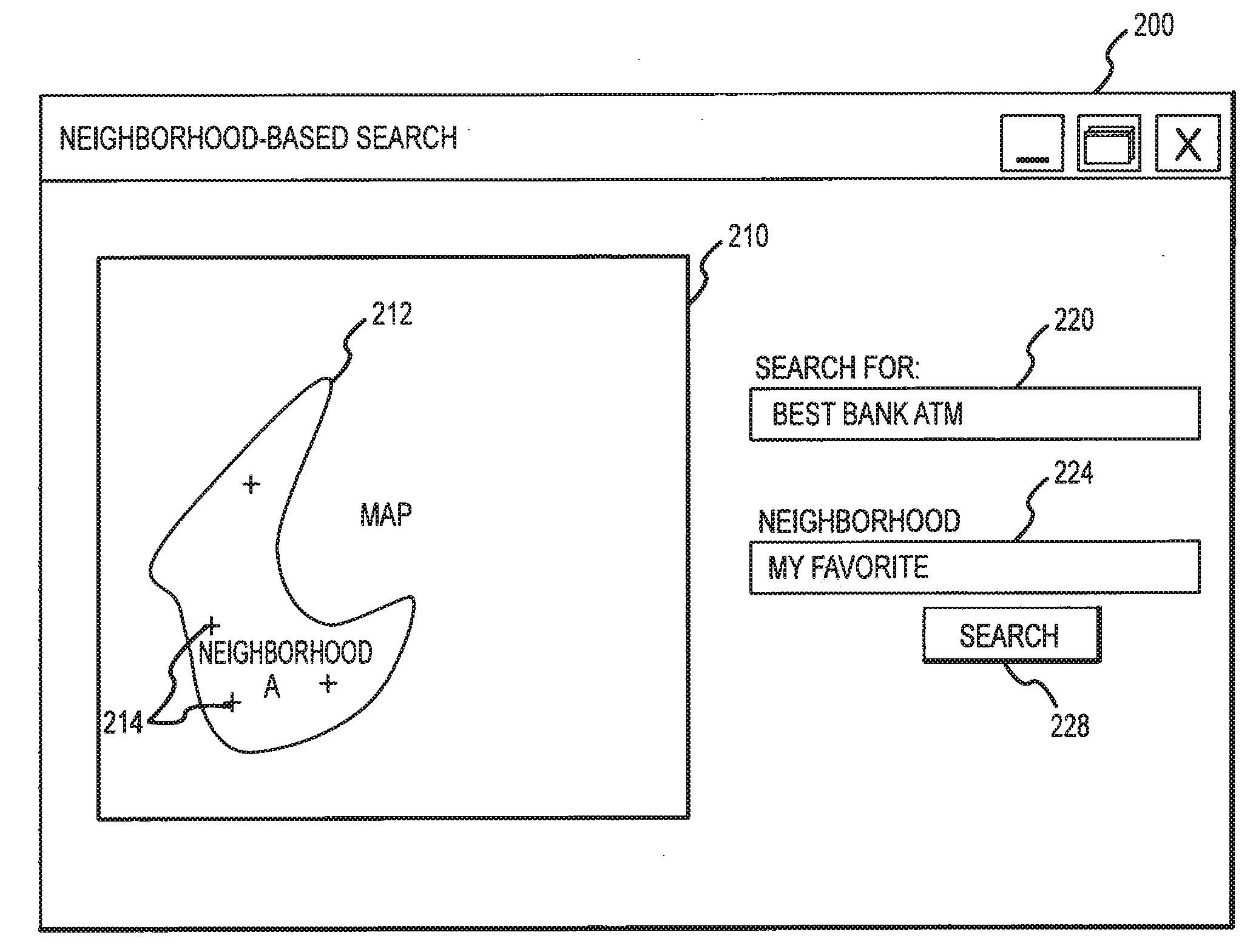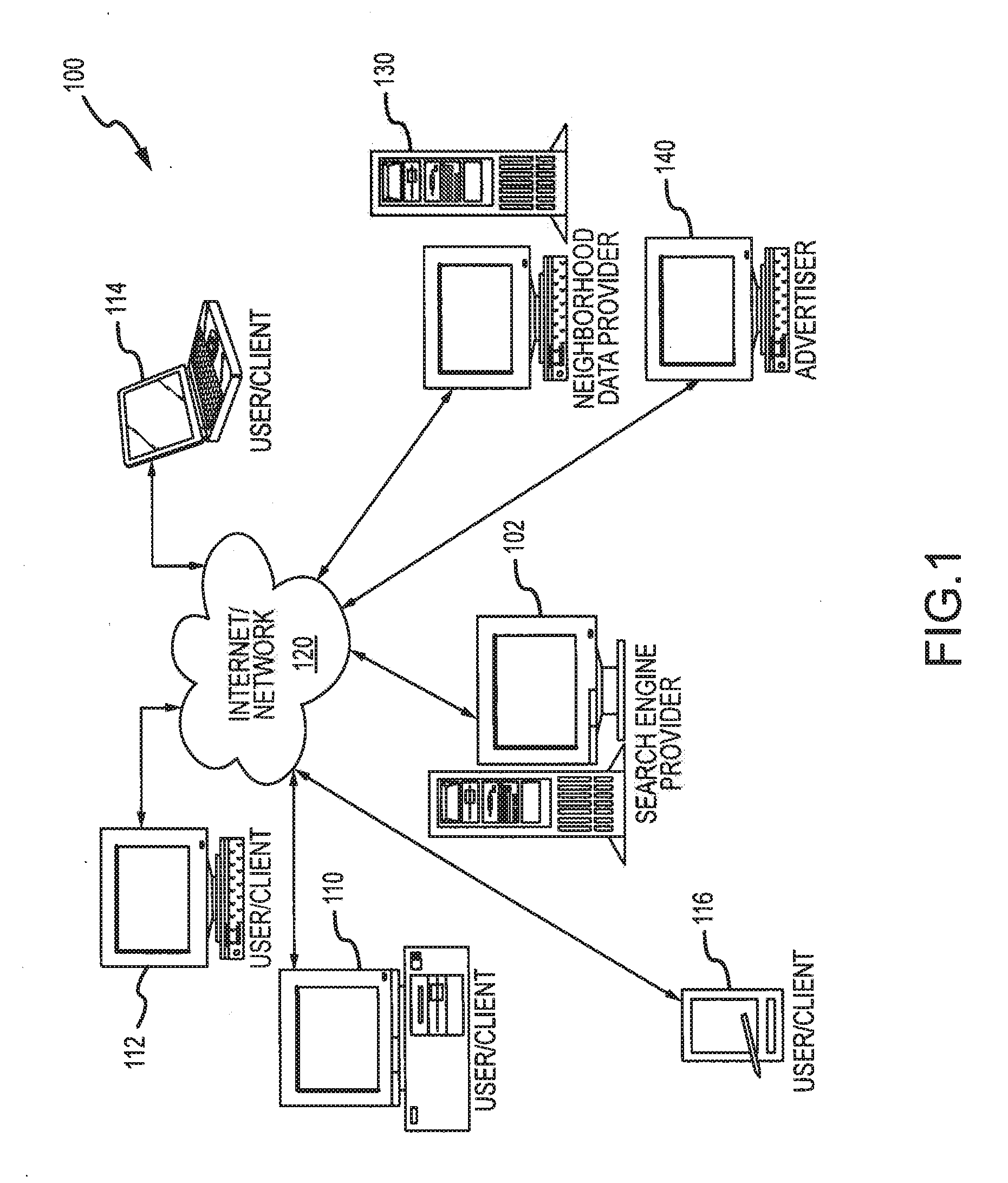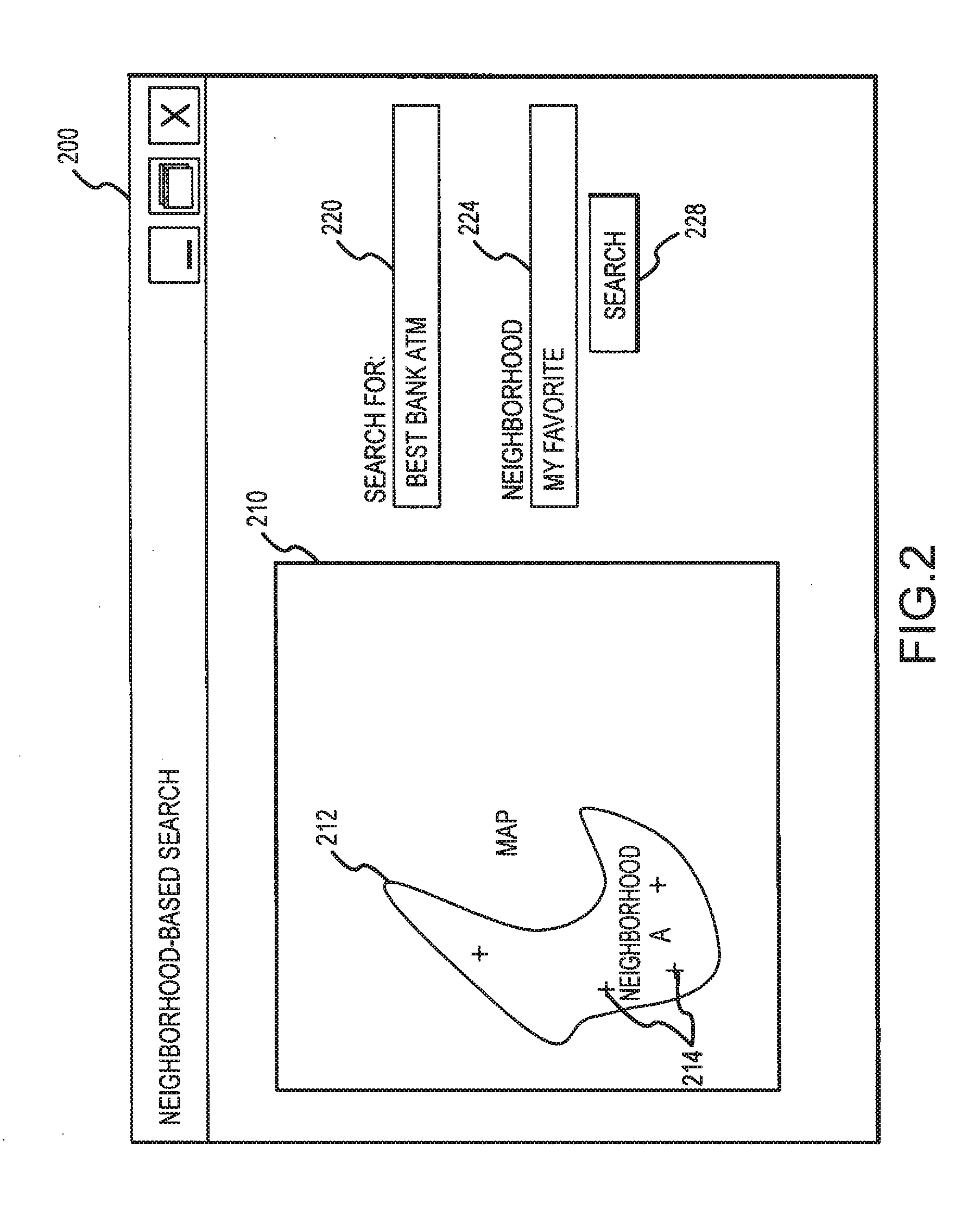Geocoding based on neighborhoods and other uniquely defined informal spaces or geographical regions
a technology of informal spaces and geocoding, applied in the field of geographical information systems and online searching of data structures with geographical indexing, can solve problems such as surprise to users, and achieve the effect of facilitating the determination of “winning”
- Summary
- Abstract
- Description
- Claims
- Application Information
AI Technical Summary
Benefits of technology
Problems solved by technology
Method used
Image
Examples
Embodiment Construction
[0025]The present invention is directed to methods and systems for creating a data structure that includes unique definitions of geographic regions such as informal spaces and particularly including neighborhoods. The data structure is created by establishing a more inclusive (e.g., generally larger) definition of each neighborhood in a particular geographic region. Interestingly, the method specifically allows the definitions to overlap (and such overlap may be intentionally created as part of the boundary definition process) to provide a neighborhood mapping or organization that better correlates with users' concepts and beliefs about neighborhoods. For example, two boundary definitions may be identified for a single neighborhood, and a new boundary definition may be generated by an additive process of the two definitions. With the new boundary definition, additional data may be gathered and stored in the data structure such as the neighborhoods relationships to other geographic r...
PUM
 Login to View More
Login to View More Abstract
Description
Claims
Application Information
 Login to View More
Login to View More - R&D
- Intellectual Property
- Life Sciences
- Materials
- Tech Scout
- Unparalleled Data Quality
- Higher Quality Content
- 60% Fewer Hallucinations
Browse by: Latest US Patents, China's latest patents, Technical Efficacy Thesaurus, Application Domain, Technology Topic, Popular Technical Reports.
© 2025 PatSnap. All rights reserved.Legal|Privacy policy|Modern Slavery Act Transparency Statement|Sitemap|About US| Contact US: help@patsnap.com



